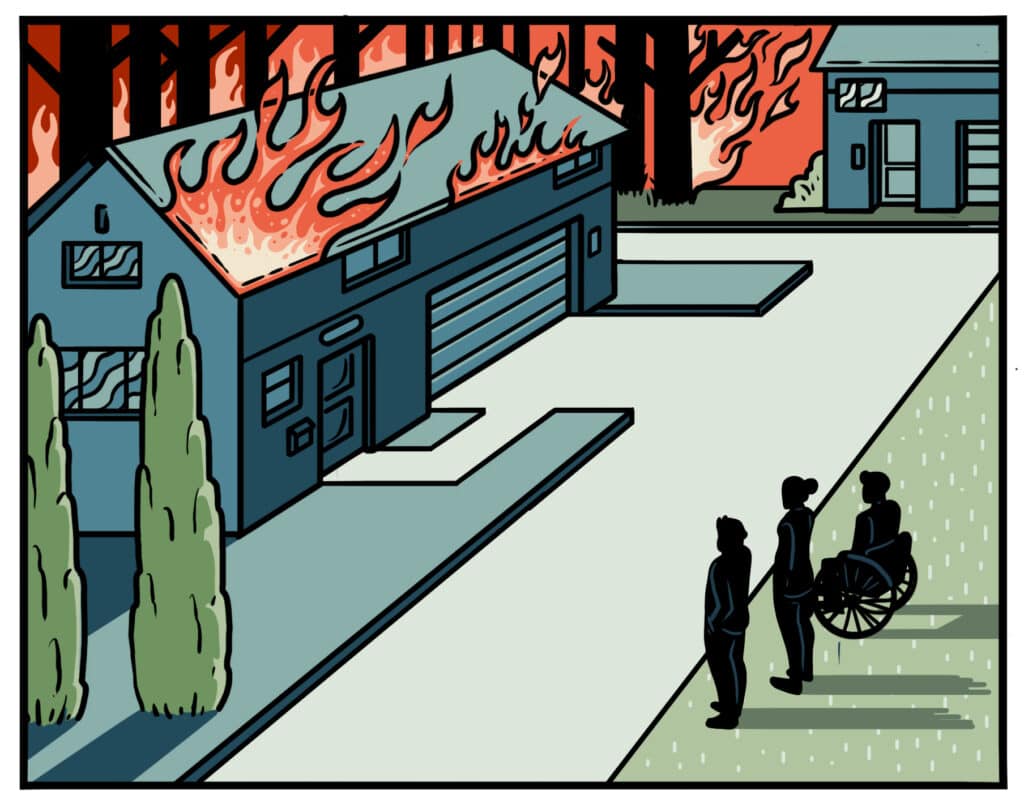
Since I was hired by FEMA as a disability integration advisor in 2016, I’ve deployed to multiple disasters to support the recovery process for people with disabilities and consulted for clients on their planning for disability preparedness. As a wheelchair user, I’ve received a firsthand view of the gaps and dysfunction that exist in how our emergency management system meets the needs of people with disabilities.
The emergency management world is still getting their heads around how to plan for people with disabilities, but the pandemic brought disability to the forefront for preparedness professionals. People with physical access or communication needs were suddenly at their doorstep in new ways. Large proportions of people who were diagnosed, hospitalized or dying from the virus were older or had respiratory or immune conditions. In other words, people with disabilities were at higher risk.
Emergency managers, public health departments, major medical centers and large corporations have been late to the game. Like the broader society, emergency managers remain stuck in the medical model of disability. In their plans, they continue to refer to “vulnerable” or “at-risk” populations. Their planning models focus on health categories, to the exclusion of inclusion and independence. They have yet to understand that we are as significant a part of their community’s economic vibrancy as other citizens.
Even the Federal Emergency Management Agency didn’t have anyone on staff responsible for thinking about the emergency needs of this huge segment of the community until they were required to in 2006 by legislation following Hurricane Katrina.
There is notable progress. Preparedness professionals are reaching out to “Disability Partners” — agencies on aging, behavioral health, developmental disability and, of course, independent living centers. These are people with insights and resources that are of real value in disasters. Working relationships with our communities give planners the real human picture of disability in today’s world that can start to break through their misconceptions. It’s their opportunity to understand that a large and growing number of people with disabilities of all kinds and degrees have active lives, and we need the same support and resources to recover from a disaster as anyone else.
To capitalize on this progress, the disability community also needs to make an equal, if not greater, effort reaching out to emergency managers. We need to learn about their work and the systems and processes so we can be effective partners.
For instance, every geographic community performs “hazard vulnerability assessments.” What types of events are most likely to occur where you live? Are you prone to hurricanes, floods, tornadoes, wildfires or terrorist attacks? Perhaps you live where it gets extremely hot in the summer (like it does here in Phoenix where I live). A power outage can be a death sentence. These are the foundations of local planning efforts.
FEMA, the American Red Cross, AARP, and United Spinal Association all have excellent web resources about preparedness for people with functional needs. A “go kit” would have a supply of medications and supplies you need if you’re forced to leave your home. Have a plan for how to communicate with family and attendants. If you need to shelter in place at home, have extra water and food on hand.
Organizations can hold preparedness events to teach these things. Recruit people to participate in disaster exercises which are a standard part of the emergency management process. As emergency managers continue to take the lessons learned from COVID-19, you have a significant role to play in helping them to improve their emergency preparedness planning for everyone in their community. Make emergency preparedness part of your overall mission.
Support New MobilityWait! Before you wander off to other parts of the internet, please consider supporting New Mobility. For more than three decades, New Mobility has published groundbreaking content for active wheelchair users. We share practical advice from wheelchair users across the country, review life-changing technology and demand equity in healthcare, travel and all facets of life. But none of this is cheap, easy or profitable. Your support helps us give wheelchair users the resources to build a fulfilling life. |


Excellent. Thank you